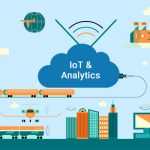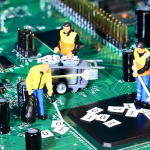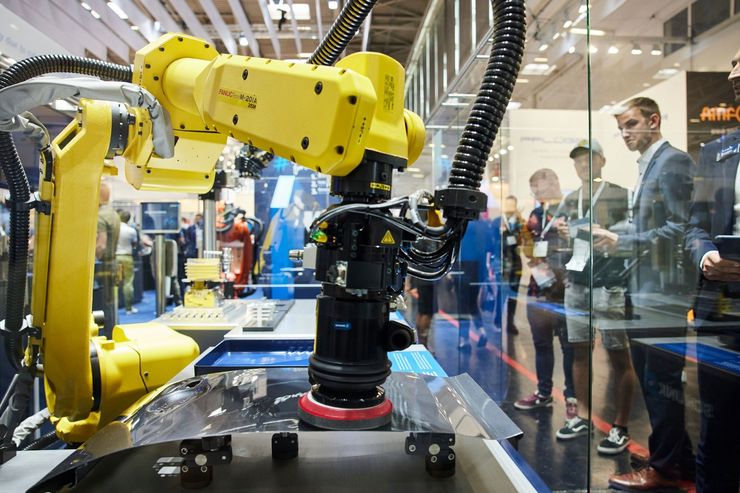Robotics and automation have already transformed many industries, replacing or augmenting human roles in factory production, warehouses, and beyond. As technological capabilities continue advancing, we are on the cusp of an artificial intelligence and robotics revolution that could reshape our economy, labor force, and society itself. This article will examine the current state of robotics, emerging trends, and the implications of these technologies for the future of work and society.
Current Industrial and Service Robot Applications
Robotics and automation are already pervasive across many sectors:
Manufacturing – Industrial robotic arms excel at repetitive precision tasks on assembly lines. Evolving cognitive features improve flexibility.
Warehouses – Companies like Amazon deploy tens of thousands of robots for inventory picking, sorting and transport.
Healthcare – Robots assist surgeons in the operating room and provide telepresence for health consultations.
Hospitality – Food service robots deliver meals in hotels and restaurants, freeing staff for higher-value tasks.
Defense – Drones and robotic vehicles replace humans in high-risk military and security roles.
Elder Care – Lift assist robots aid the elderly with limited mobility with everyday tasks.
Transportation – The path is being paved for driverless autonomous vehicles for delivery and personal transit.
As former MIT professor Dr. Rodney Brooks says:
“Practical applications of automation and robotics are already revolutionizing many industries by boosting efficiency, productivity, safety and precision beyond human capabilities.”
The Rise of More Capable Robots Enabled by AI
A key driver propelling robotics forward is artificial intelligence. AI gives robots enhanced sensory perception, planning, decision making and adaptation skills. Key enablers include:
Computer Vision – Cameras and deep learning algorithms enable robots to recognize objects, read signs, detect obstacles and navigate unfamiliar environments safely.
Natural Language Processing – Allows more natural speech interaction between robots and humans by interpreting commands and speech.
Reinforcement Learning – Robots can learn new skills through trial, error and feedback much like humans. This facilitates adapting to changing conditions.
Autonomous Navigation – Robots combine sensor data with maps and route plans to find their way without human guidance.
Manipulation – Improved robotic hand-eye coordination using machine learning helps grasp and manipulate a wider range of objects.
Distributed Intelligence – Coordination of multi-robot teams to collaborate on large tasks leverages networked AI.
As the technology progresses, robots are becoming competent co-workers able to take on more complex real-world challenges. Their expanding capabilities are bringing benefits as well as disruptions.
The Impact of Robotics and Automation on Jobs and the Economy
Intelligent robotics promises enormous wealth generation but also poses challenging questions about the future of human employment. Experts see mixed impact across occupations:
Job Creation – New jobs related to developing, programming, maintaining and operating robots will continue growing rapidly. This offsets some losses.
Hazardous Work – Robots excel at replacing human labor in dangerous settings like mines, contaminated areas or extreme climates.
Repetitive Work – Simple manual tasks with consistent environments are easy targets for automation. Manufacturing and warehouses will see the largest reductions in human labor.
Service and Maintenance – Robots and AI struggle replacing humans in unpredictable settings and roles requiring interpersonal adaptability and empathy. Many skilled trade jobs fall into this category.
New Kinds of Work – As with past technological shifts, robots may displace certain jobs but enable entirely new kinds of emerging occupations. The full effect is impossible to predict.
Overall automation is likely to increase productivity and economic output, but concentrate wealth among those who own the robots unless policies are enacted to foster more equal distribution of the benefits. Managing this transition is a key challenge facing society.
The Ethical Challenges of Intelligent and Autonomous Machines
As AI-enabled robots become a bigger part of our lives, thorny ethical issues arise that must be grappled with:
Trust and Safety – Can we trust autonomous machines not to harm humans due to flaws in how they interpret the world? Strict controls and transparency are needed.
Accountability – Who is liable when an intelligent robot causes harm due to its actions? This is a gray legal area still being defined.
Security – Connected robots could be vulnerable to hacking that compromises safety and privacy. Cybersecurity is imperative.
Bias – Machine learning algorithms can inherit biases from flawed human data. Safeguards must be taken to ensure fairness.
Displacement – Replacing human jobs on a large scale may require programs to facilitate economic realignment.
Existential Risk – In the long term, super-intelligent AI could escape our control and pose catastrophic threats according to some. Managing this speculative but dire scenario warrants care.
Robotics pioneer Joseph Engelberger said:
“We must shape the rise of thinking machines to augment humans and enrich lives, not replace and impoverish them. The extent to which robotics enhances or disrupts society will depend on how well we handle its emerging power.”
Proactive governance and ethics-aware development is crucial to steer these technologies toward benefitting humanity.
The Future: Ubiquitous Robotics Integrated Into Daily Lives
Looking ahead, robots seem destined to become ordinary and ubiquitous:
Home Robots – Affordable consumer robots that clean, teach kids, provide companionship, and act as assistants are coming. Home robot spending is forecast to grow to over $20 billion by 2025.
Expanded Service Industries – Robots will work alongside humans as waiters, receptionists, store clerks, and for customer support in more and more businesses.
Logistics and Agriculture – Autonomous vehicles will normalize for package and food delivery. AI and robots will help produce more food with less.
Healthcare – More diagnosing and routine care provided by robots and intelligent medical devices will expand access.
Infrastructure Inspection and Maintenance – Drones and crawling robots will take over dangerous high-rise and remote maintenance activities.
Elder Care – With aging populations, home care robots will provide health monitoring, companionship and physical assistance.
The world of tomorrow is sure to be populated by all manner of adaptive, intelligent machines providing services while working cooperatively with humans.
Conclusion
Robotics and automation continue disrupting existing industries while making possible new capabilities that were unthinkable just decades ago. Artificial intelligence is enabling robots to perceive, adapt and make limited decisions, increasing their competence. While this transition is not without difficult challenges and risks, with prudent ethics and policies, intelligent machines can be shaped to improve our standard of living. But to realize the full potential, we must prioritize developing, governing and using these emerging technologies wisely.















